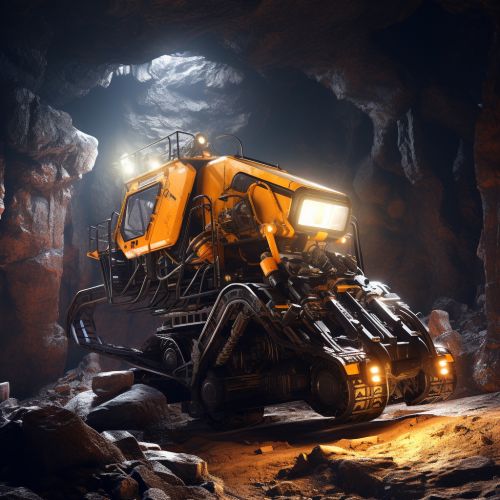Robotic mining
Introduction
Robotic mining refers to the use of automated machinery and AI systems in the extraction of valuable minerals and other geological materials from the earth. This field is a subset of both robotics and mining engineering, and it has gained significant attention in recent years due to the potential benefits it offers in terms of efficiency, safety, and environmental impact.


History and Development
The concept of robotic mining has its roots in the early 20th century, when the first automated mining equipment was introduced. However, it was not until the late 20th and early 21st centuries that significant advancements in robotics and artificial intelligence made it possible to develop fully autonomous mining systems.
Types of Robotic Mining Systems
There are several types of robotic mining systems currently in use or under development. These include:
Autonomous Haulage Systems
Autonomous haulage systems (AHS) are used to transport mined materials from the extraction site to the processing facility. These systems use GPS and other navigation technologies to operate without human intervention.
Robotic Drilling Systems
Robotic drilling systems are used to drill holes in the earth for the purpose of extracting minerals. These systems use advanced sensors and AI algorithms to determine the optimal drilling location and depth.
Robotic Excavation Systems
Robotic excavation systems are used to dig and move earth in the mining process. These systems use a combination of sensors, AI, and mechanical systems to perform tasks that would traditionally be done by human operators.
Advantages of Robotic Mining
Robotic mining offers several advantages over traditional mining methods. These include:
Increased Efficiency
Robotic mining systems can operate 24/7 without the need for breaks, resulting in increased productivity. Additionally, these systems can perform tasks more quickly and accurately than human operators, further increasing efficiency.
Improved Safety
Mining is a dangerous occupation, with workers often exposed to hazardous conditions. Robotic mining systems can perform dangerous tasks, reducing the risk to human workers.
Reduced Environmental Impact
Robotic mining systems can be programmed to operate in a way that minimizes environmental impact. For example, they can be programmed to avoid areas of ecological significance or to use resources more efficiently.
Challenges and Future Directions
Despite the many advantages of robotic mining, there are also several challenges that must be overcome. These include the high initial cost of robotic mining systems, the need for advanced infrastructure, and the potential for job loss in the mining industry.
Looking ahead, the field of robotic mining is likely to continue to evolve. Advances in AI and robotics technology will likely lead to the development of more advanced and efficient robotic mining systems. Additionally, the increasing demand for minerals and the decreasing availability of easily accessible mineral deposits may drive further adoption of robotic mining technologies.
